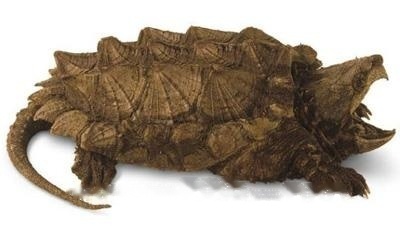
Snapping turtle
Real snapping turtles look like crocodiles fish, Set turtle and crocodile in one, so called true snapping turtle. Its head is relatively thick and cannot be completely retracted in
English name: Dendroaspis polylepis
Lifetime: 12 years
Black Mamba Snake (Dendroaspis polylepis) is large and looks a bit scary , it is one of the fastest moving snakes in the world. In Africa, it is called "African Death".
The black mamba can reach speeds of up to 19.5 kilometers per hour, and it can also stand up to half its length, but the purpose is to climb trees, not to attack humans. It is also often considered a very dangerous venomous snake for various reasons.
Chinese name: Black Mamba
Chinese Alias: Black Tree Cobra
English Name: Dendroaspis polylepis
Binary Name: Dendroaspis polylepis
Kingdom: Animalia
phylum: Chordata
Class : Reptilia
Order: Squamata
Suborder: Snake suborder (Serpentes)
Family: Elapidae
Genus: Dendroaspis
Species: Black Mamba (D. polylepis)
Distribution: Africa
Black Mamba Snakes are rarely black. Their body color has a variety of changes, mainly gray, dark green, brown, brown, khaki, etc.; while the larvae are mainly bright gray or dark green. The name Black Mamba comes from his black mouth.
The abdomen of the black mamba is white, and some are beige; in addition, some individuals have light-colored stripes on their bodies.
The most recognizable feature of the black mamba is its jet-black mouth, which is its best warning message when threatened; its eyes are mostly brown or black. These can be easily hidden.
The black mamba is huge, with an average adult body length of 2.5 meters and a maximum of 4.45 meters; its average weight is 1.7 kg. It is the second longest venomous snake in the world, after the Asian king cobra. The average lifespan of this snake is 12 years.
Black MambaSnakes use their speed to escape danger instead of chasing prey. Its long-distance moving speed can reach 11-19 km/h, while the short-distance highest record is 16-20 km/h, or even 23 km/h, making it the fastest moving snake in the world.
The black mamba is reclusive and secretive; when disturbed, it opens its cobra-like neck, opens its jet-black mouth, and makes a "beep" sound. If this action fails to scare the enemy, it will attack. The black mamba is diurnal.
Although their scientific name means "tree snake", they mainly live on the ground. This snake usually retreats when in danger.
Habitat
The black mamba is widely distributed, ranging from tropical dry and wet climatic areas, sparse woodland, rocky land, to dense forest and other places. have their whereabouts. Among them, shrubs are their main habitat.
75% of the population is engaged in farming where the black mamba is primarily infested; the rest are engaged in steel mill operations. At noon, the black mamba usually climbs higher places (like tree tops) to bask in the sun or wait for prey.
And this is the main reason why humans are attacked, because many orchard workers pick crops from trees with their bare hands, which triggers snakes to attack to protect themselves. This snake is very dangerous, but either in self-defense or thinking you are going to mutilate its eggs or young.
Black MambaSnakes, like many snakes, are patient enough to wait for their prey to approach. Then take the right time to attack them, and if the prey struggles, the black mamba will use various means to take it down, and they will take different measures depending on the size of the prey.
When encountering larger prey, the snake will usually let it run away after the attack, and with the smell, the snake can retrieve the dead prey; however, when dealing with smaller prey such as birds or When ratted, the black mamba will bite until the prey stops moving and devours it. In addition, they also hunt bats.
Breeding
Spring is the breeding season for the black mamba. The male snake will find the female by smell. Once the male finds the female, he will touch the other's body with his tongue. If the other side accepts, the two snakes will intertwine and start to mate. After mating, the female snake can give birth to about 17 snakes. The incubation period of eggs, snake eggs is usually 3 months (usually in summer). Young snakes have the same deadly venom as adults, and their body length is generally 40 cm.